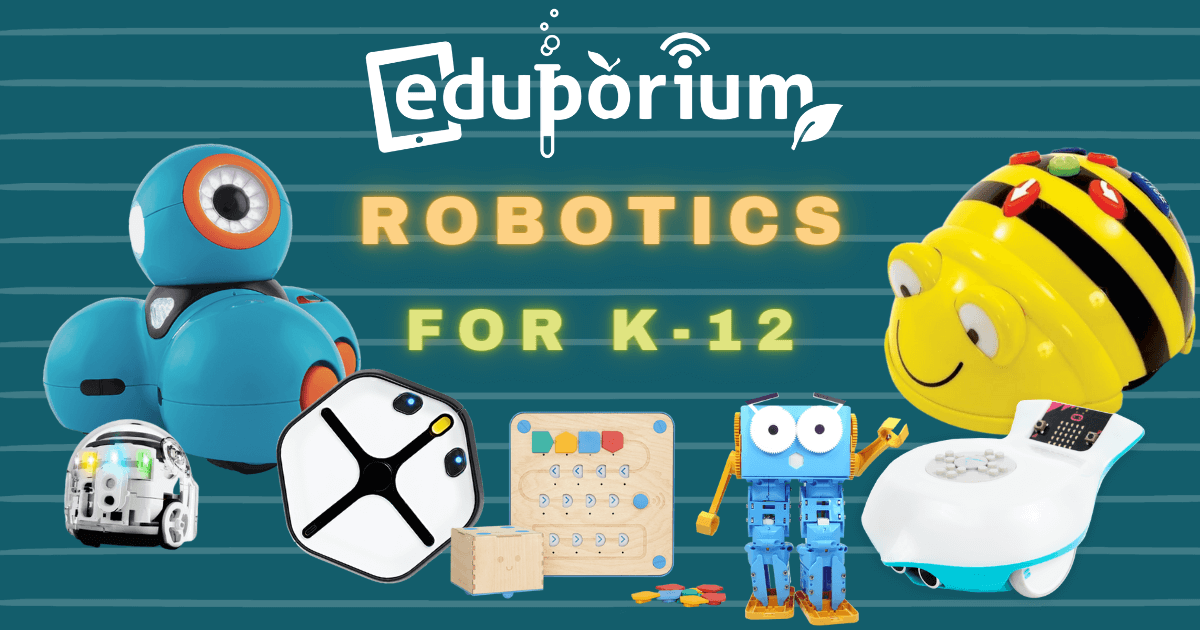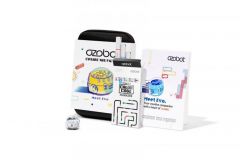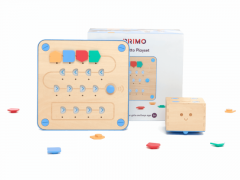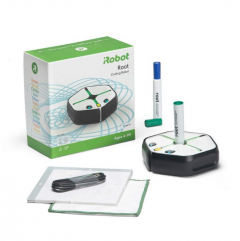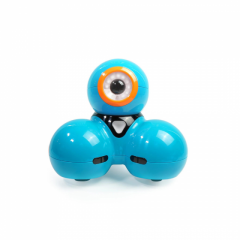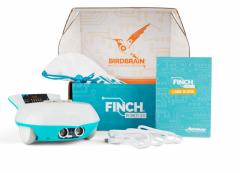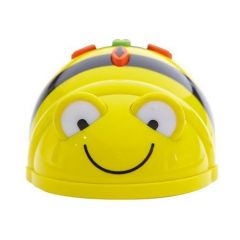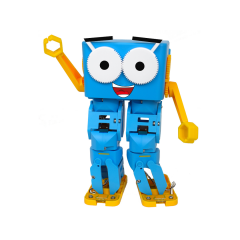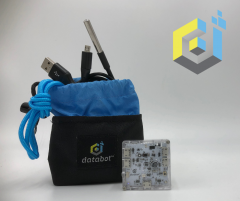Robotics tools help create some of the best opportunities for kids to learn coding and, today, educational robotics is more of a learning system than a one-time instructional tool. There are so many elements within computer science that, as time goes on, many of the most effective classroom robots have evolved to help teachers illustrate so many different coding concepts with various avenues for all K-12 students to develop CS skills. So, while some robots are designed for early education (as early as Pre-K), others are a bit more complex. And, some may require students to have basic programming skills before even getting started. To that end, we've created a Robotics Progression Chart to break down the K-12 robotics market while also factoring in new versions and trends as well as specifying how to help kids progress.
Robotics is routinely used for introducing coding to students in almost all levels of education. In both Pre-K and kindergarten, for example, educators can use the Cubetto Robot to simplify coding for pre-readers to understand. There is also the Bee-Bot, which is perfect for pre-readers, too. Like with that Cubetto Playset, Pre-K and kindergarten kids can explore screen-free coding activities for the Bee-Bot. Unlike when using the Cubetto, however, children can also incorporate digital coding with the Bee-Bot app once they're more experienced. Then, in early elementary school, the Dash Robot and Edison Robot are fantastic for Blockly introductions and building simple programs.
Continuing forward, the Finch 2.0 and Ozobot Evo also incorporate new coding elements, like color codes, more detailed block coding, programming a robot to draw, and a few new platforms in MakeCode, Snap!, and OzoBlockly. Then, there's the Root Robot, which offers an in-depth hybrid option for upper elementary students. It works for middle schoolers too and, though viable in all K-12 grades, it’s particularly valuable in upper elementary. Finally, the databot 2.0 and NAO Robot V6 round out our robotics progression with their introductions to text-based programming in languages like Python as well as C++ coding.
Robotics tools for Pre-K and Kindergarten.
Starting in early education, the Cubetto is awesome for introducing children to robotics and coding for the first time. It's designed for kids from 3-6 years old and they can code with the Cubetto before they've even learned to read. The Cubetto system features four main parts: the wooden robot itself, the control board, a blanket with a grid surface, and various blocks. Students place these blocks into the control board, press a button, and see how the ‘code’ controls their robot's movements. If you've already explored the Cubetto or you are looking for something a little more in-depth, the Bee-Bot is one of the most trusted early education robotics tools. Created by the Terrapin team, the Bee-Bot helps young students learn key CS skills. These include sequencing, estimation, and problem solving as they create programs with the press of a button.
Next, the Dash Robot from Wonder Workshop is great for the early elementary grades and for introducing kids to block coding. Intended for students in Grades K-5, the robot and the Dash coding apps help them learn about the Blockly environment. Within the Blockly app, specifically, students can drag and drop these programming blocks to control numerous features of their robot. After building programs, including getting the Dash to drive, light up, and make sounds, students can try more complex functions. These include an introduction to both variables and controls along with other coding elements. Plus, using the virtual Dash simulator known as Dash's Neighborhood, students can progress through the Dash Robot projects and challenges. And, teachers can even monitor their progress using the Class Connect software.
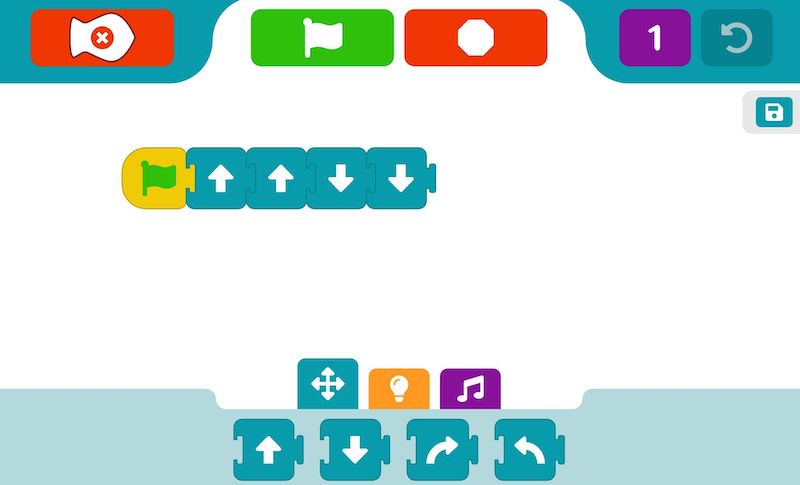
The best robots for elementary schools.
Another option for earlier in elementary school is the Finch Robot 2.0 from BirdBrain Tech. This sleek robot is incredibly versatile and it's actually viable across all the K-12 grades. Largely because of its extensive list of compatible coding languages, including Python, Java, Snap!, and MakeCode, the Finch 2.0 works well across upper elementary, middle, and even in high school, too. When it comes to robotics for elementary students, however, its two graphical coding languages, FinchBlox (for pre-readers) and BirdBlox, are ideal for students at this age. There are also lots of readily available Finch 2.0 activities across the BirdBrain site. Educators can even filter them by robot and grade level to find exactly what they need.
Next up, the Ozobot Evo allows students to ease into more complex elements of Blockly coding. They can use markers to draw color codes for the Evo to see and react to when starting out. And, once they’re more confident with their abilities, they can move on to block coding on the web. Using the OzoBlockly platform, students can control their Ozobot Evo's movements and expressions among other things. They could even gradually incorporate more complex elements of coding, including loops and controlling specific elements of the robot’s movements. Plus, with the robust Ozobot Classroom platform, educators can leverage clear and concise learning videos. They can also find grade-specific lesson plans, assign robots to students, and track their progress with ease. Check out their educational AR robot, MetaBot, too!
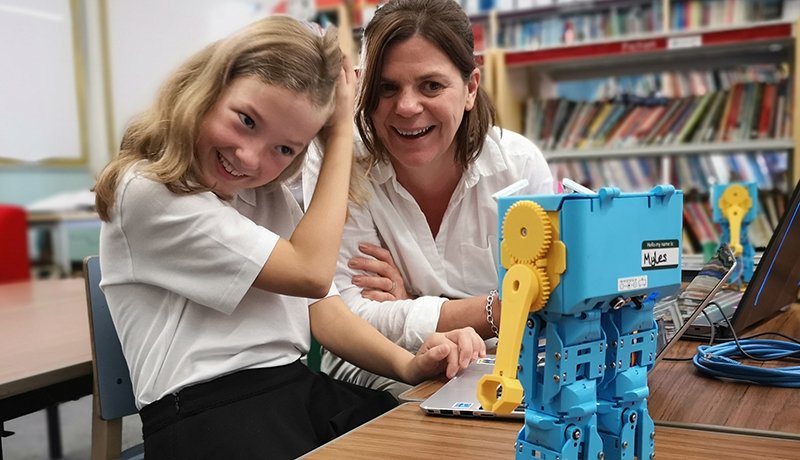
Upper elementary options.
As older elementary students start to look for greater challenges, the Marty V2 Robot is a nice option. This robotics solution combines elements of engineering and coding in providing students with a more in-depth STEAM experience. The latest Marty V2 kits are super comprehensive and are all on our store. Depending on class size and student demand, there's a 5-pack, 10-pack, and 15-pack to outfit your school with Marty Robots. Using the Marty V2 mobile app, students can program it with Scratch coding at first and progress to Python. Also, the Robotical Learning Portal is home to tons of inspiring lessons and helpful content.
The Root Robot is next in our progression and, even though it works in all K-12 grades, its sweet spot is in late elementary school. The Root, itself, embodies its own coding progression with options to code in three different ways: blocks, hybrid, and text. Educators can also purchase curriculum to use when teaching with the Root in the classroom. Plus, students can learn new coding elements and the Swift coding language as they program these robots to climb vertically. Also, in addition to the original Root Robot, the Root rt0 and Create 3 offer alternative options for the classroom. With the rt0, kids can explore robotic sensors, create programs on the iRobot Coding app, and perfect programming skills. And, the Create 3 involves advanced CS applications, ROS 2, and even telepresence.
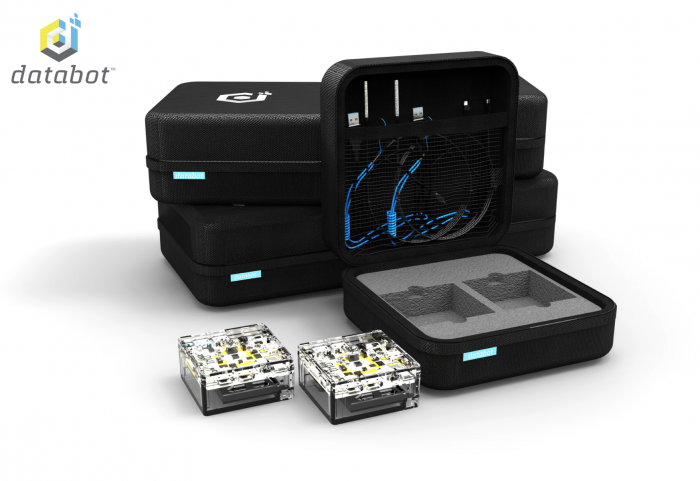
Middle and high school robotics.
Depending on how much coding and robotics experience students get in the elementary grades, they may be ready to try some of the more challenging classroom robotics solutions. To be perfectly blunt, however, middle school is also the perfect time for them to try out some additional languages with robots they might have explored already. The Edison, for example, also works with a form of Python known as EdPy. Plus, as we mentioned, the Finch 2.0 is compatible with Snap!, Python, and Java. Even the Root offers connections to more advanced coding languages, like Python and Swift. Our go-to recommendation for middle school robotics, however, is often the databot 2.0. With this cube-shaped device, students can utilize its various sensors to collect authentic data from the world around them. Plus, with plenty of lesson guides and CTE applications, students can use the databot 2.0 to prepare for their futures.
Finally, the last robot on our list is the NAO V6. The sixth generation NAO Robot remains among the most advanced humanoids and is great for teaching coding. It's also awesome for special education and social-emotional lessons as its friendliness and calming appearance help kids to connect with technology. As for programming, the NAO V6 offers text coding opportunities. There are tons of NAO Robot project ideas for the classroom and students can program its movements using its specialized Choregraphe software. They can create programs, control the NAO’s movements, leverage its impressive facial recognition abilities, and now explore AI. And, although the NAO Robot price is high, long-term investments can have a substantial impact on many types of students.
Robotics is an always evolving and compelling area of STEAM education. Besides that, it can certainly help students prepare for future careers. From Pre-K up through high school, there are robotics tools (these and lots of others) that teachers and students can use in classroom STEM lessons, in a school makerspace, or in your afterschool clubs. Visit the Robotics section of our store to learn more about these robots, request a quote, or place an order. Follow us on Twitter and Instagram for more.
| Contact the Eduporium team to learn more about K-12 robotics and coding education or specific classroom solutions. |



